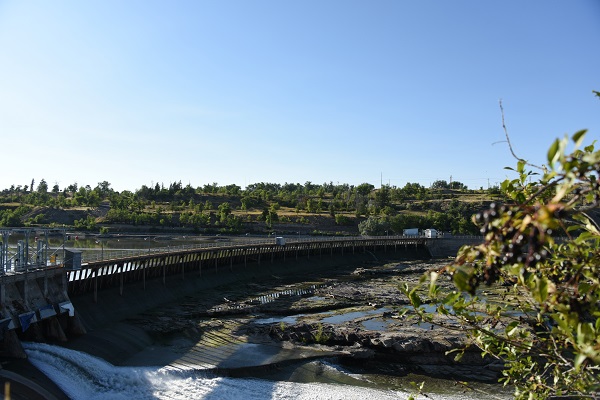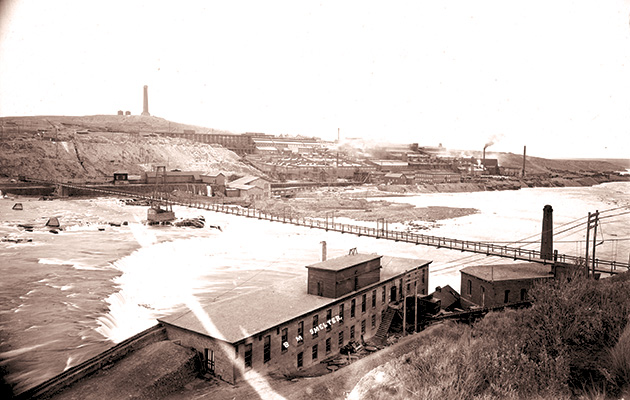
Black Eagle
About the Black Eagle Hydroelectric Facility
Found two miles downstream of the town of Great Falls Montana, this three-unit hydroelectric generation plant can be seen up close from the popular River's Edge Trail.
Built in 1927 by the Montana Power Company, Black Eagle is a part of a system of hydroelectric dams in the Great Falls area. While Black Eagle has a generating capacity itself of only 21 megawatts, the area dams combined have a generating capacity of a total of more than 220 megawatts, which is enough to power seven cities the size of Great Falls.
Black Eagle Dam Spillway project
Historic Namesake

Historic Namesake
Black Eagle Falls was named by Meriwether Lewis in 1805, when he spotted an eagle's nest in a cottonwood tree on a heavily wooded island below the falls and future dam site. More than 50 years later, observers continued to see dark colored eagles, just as Lewis had.
Eventually, the community of Black Eagle was born just across the Missouri River from Great Falls. For years this community was home to the Anaconda Company's copper smelting and refining operations.
The Beginning of an Era

The Beginning of an Era
The original Black Eagle Dam was finished in 1891, making it Montana's first hydroelectric dam built. This marked the beginning of the state's significant role in hydroelectric generation.
Due to increased demand for electricity in Great Falls and the surrounding area, the Montana Power company developed a plan to build a new dam, just below the original dam's location. Construction of the new dam began in 1926, and the dam and powerhouse were fully operational in September of 1927.


